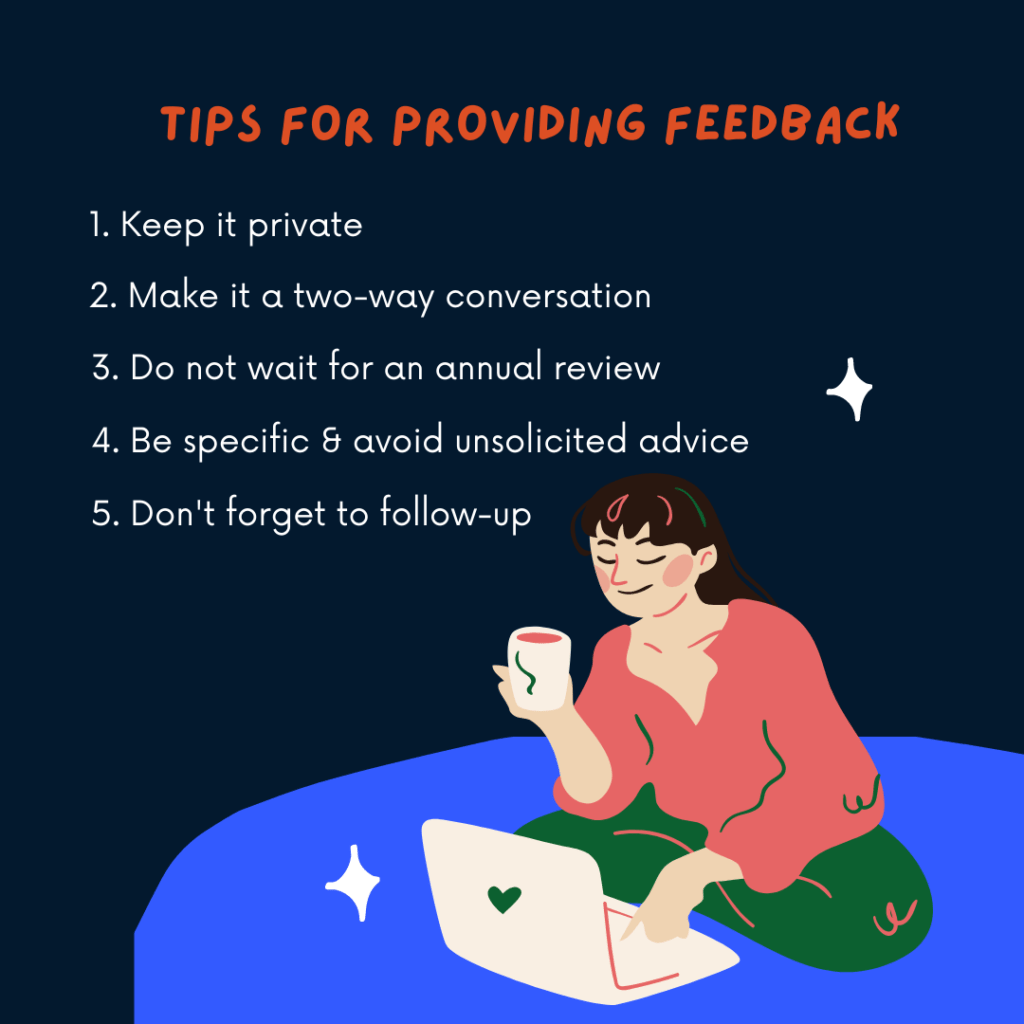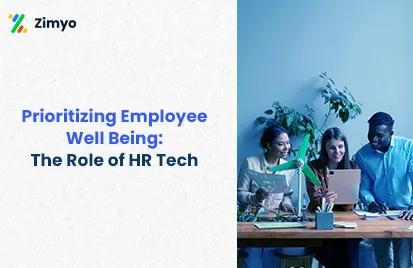Consistent and efficient one-on-ones for management and staff are the most effective tool for establishing productive and motivated teams, regardless of where they work.
As a manager, one-on-one meetings are one of your most essential productivity tools. They allow you to pose strategic questions like, “Are we focusing on the right things?” This shows your employees that you value and care for them❤️
Gallup recently discovered that traditional, irregular performance assessments and feedback — that only occur once per year — actually worsen productivity 30% of the time. Employees who receive effective 1-on-1s, on the other hand, are 3.2 times more driven and 2.7 times more likely to be engaged.
Whether you’re a novice manager or an experienced one, whether you’re new to one-on-one meetings or have them on a regular basis with your team members, this simple and easy-to-follow guide will show you how to make the most of a manager’s most effective tool – one-on-one meetings – to establish top-performing teams.
➡️ How Are One-On-One Meetings Different From Any Other Meeting?
Many people confuse one-on-one meetings with any face-to-face encounter between management and an employee. That, however, is not the case!❎
“A one-on-one session is a recurrent, interactive, two-way encounter between a manager and their direct reports, where employees are free to express their minds and share their feelings with their manager”
So, what’s the importance of 1-on-1 meetings, you ask??
A one-on-one meeting helps the managers to connect with their teams, improve employee experience, identify and eliminate any roadblocks they may be having, and keep the feedback engine operating. This ensures that each team member offers their best to grow, flourish, and achieve exceptional achievements.?
➡️ Why are One-On-One Meetings A Manager’s Most Effective Tool?
What’s the purpose of 1-on-1 meetings? ? Why do people think that one-on-one meetings are a manager’s most effective tool? Let’s try to address these questions by first figuring out what managers want to accomplish in order to go from good to outstanding.
To be a great manager, you must be a people’s and results-oriented person, which means you must care deeply about your team while also striving to produce the best results possible.
But how can you make sure that your team feels valued and respected so that it is constantly willing to give its all in order to get the best results?
Although there are many other options for managing your teams, such as training courses, webinars, and peer teaching, nothing beats regular and high-quality one-on-one meetings with your team members.
In his book ‘High Output Management,’ Andy Grove, former CEO and co-founder of Intel says,
“An investment of ninety minutes of your time can improve the quality of your subordinate’s work for two weeks, or for more than eighty hours.”
We’ve compiled five primary benefits of one-on-one meetings with your staff based on our experiences and knowledge gained while working with a variety of managers.
➡️ Consistent & Regular Feedback
Feedback is an important part of your development as a manager because it allows you to track your team’s progress. According to a Forbes article, 65 percent of employees desire more feedback on their performance than they receive today.
When it comes to today’s workforce, millennials want constant and frequent feedback from their bosses. According to a Clutch survey, “72 percent of people whose bosses provide reliable and timely feedback find their employment worthwhile.”

The key to providing consistent and accurate feedback is to interact with your staff one-on-one on a frequent basis.
Because a 1-on-1 is a regular event on a manager’s schedule, it gives them a unique opportunity to provide regular and real-time feedback. As a result, the employee is able to incorporate the input into the work right away and rectify errors before they become irreversible.
Employees are not the only ones who should receive feedback. If you want to grow as a manager and be a leader, you must also encourage employee feedback. Your employees work very closely with you and will undoubtedly have valuable information about your management style, specific decisions affecting them or the team, office culture, and organization, among other things.
What better method to get to know your employees’ perspectives than a one-on-one meeting?
Employees are frequently intimidated by their bosses, and they may be hesitant to provide constructive feedback. A regular one-on-one meeting allows your staff to better know your personality, making it easier for them to be open with you.
➡️ Cement Your Relationship With Your Team
One-on-one meetings allow a manager to develop a strong bond with her or his team members. Kim Scott talks a lot about ‘caring personally’ for your team in her book ‘Radical Candor.’
Caring personally entails demonstrating that you care about the individuals with whom you work.❤️
A one-on-one meeting is the most effective way to demonstrate to your staff that you care about them and appreciate their work. Your team is aware of how hectic your schedule is as a manager. You are responsible not only for your team but also for a number of your personal deliverables.
When you make time for your employees in your busy schedule on a regular basis, they will feel valued.? After each 1-on-1 you conduct, you can feel a surge of positive energy throughout the team. It gives you the opportunity to start building a relationship of teamwork and collaboration with your team members, which you can eventually strengthen further.?
➡️ Nip The Problems Right In The Bud
Assume you have a new employee in your team.
You believe she has a lot to offer, so you give her a month to adjust to her new job. But you are unsatisfied with her work after one month. So now you choose to give her a little more time to settle because it’s just been a month. But you never make one-on-one interaction with her and think she’ll come up to you on her own to talk about any problems she’s having.
Her performance continues to be below average after three months, and she finally resigns in the fourth month. Because you never had a one-on-one meeting with her to understand her hurdles and offer her a safe atmosphere to grow boldly, the actual reason for her quitting will always be a mystery to you.
A one-on-one meeting is an excellent opportunity for you to gain a firsthand understanding of the real issues your employee is experiencing and to eliminate the roadblocks in the most effective way possible.
Andy Grove in his book High Output Management writes:
“A general rule that we should always aim to follow is to recognize and resolve any issue at the earliest possible stage.”
As a result, a manager can nip a problem in the bud before it grows too large to handle and leads to something as drastic as a high-potential employee quitting the organization.
➡️Check Motivation Level/Morale
One-on-one meetings allow the manager to assess the team’s motivation.
A manager is only as good as his/her staff, and you’ll want it to feel motivated if you want them to continue giving their all.
Assume you have an employee named Jake on the job for more than two years. Normally, he excels at his job, but you’ve noticed a sharp decline in his performance recently. His reports are brief, and he begins to make reckless mistakes.
You know something is bugging Jake since he is a star performer.⭐ His motivation has dropped to an all-time low. So, how would you recognize the genuine problem? ☹️ In an ideal world, you’d schedule a meeting with him, listen to his concerns, and try to help him find a solution.
Was there any way to predict Jake’s lack of motivation? Yes, indeed.✅
You could have kept track of Jake’s motivation level and rectified the problem before it grew deeper and started hurting his productivity and team outcomes if you had regular 1-on-1 sessions with him.
Building a highly motivated team is not a task that can be completed in a single day. You must always work toward it by communicating with your staff on a regular basis and checking on their level of motivation.
A one-on-one meeting can help you figure out how motivated your team is, support them if they’re driven, and eliminate roadblocks if they’re not.
➡️ Coach The Team
One of the most crucial attributes of a good manager, according to Google, is the ability to mentor.
According to Google, one of the characteristics of an excellent coach is:
“Tailoring techniques to match individual communication styles In regular one-on-one encounters”
The one-size-fits-all strategy will not help a manager succeed. No two employees are alike. Each employee has their own set of skills and weaknesses, as well as their own working and communication styles.
The strength of one employee may be the weakness of another. As a result, you won’t be able to express the same appreciation or offer the same solutions to all employees.
You’ll need to tailor your conversations with each employee to know what works best for them. And the only way to do it is to have regular one-on-one sessions with your workforce.

What Should Managers Do Before One-On-One Meetings?
Being well-prepared can make or break a one-on-one interaction. Before you start one, make sure you:
➡️ Set A Common Agenda
Clarity and thorough planning are required for a successful one-on-one. Keep in mind that this is a group conversation. Prior to the discussion, both you and your employee should edit and update a common meeting template.
➡️ Review Your Notes From The Last Meeting
It’s essential to revisit the roadblocks, objectives, and issues stated previously. This keeps the ball rolling while also demonstrating to your teammates that you paid attention and are concerned about their progress.
➡️ Determine What You Want To Achieve
Prioritize the most important items on the agenda. Do you need to provide some constructive feedback? Ask yourself what you want the end result to be before your meeting. Consider how you’ll provide that feedback in such a way that your team is most likely to get it, and strive toward the intended result.
Topics You Can Discuss In One-On-One Meetings
1. Employee Wellbeing
The first thing you need to ask your employees is- How are they doing? I know it sounds cliche, but it’s important to know how your employees are feeling physically, mentally, and emotionally.
Questions you can ask:
- Is everything alright in your personal life?
- How are you feeling right now?
- Are you having enough time to take care of yourself?
- Do you spend enough time with your family and friends?
- Is there anything bothering you both personally and professionally?
2. Employee Performance
After knowing about the health and wellness of your employees, it’s time to focus on their performance. The amount of work they do, the time they spend on a particular task, and the challenges they face while working can be the topics you can discuss. Who knows these things might be affecting their productivity as well as personal life?
Questions you can ask them:
- Do you feel overburdened?
- How much time do you spend on a particular task?
- Are you facing any challenges with your work, if yes, what are they?
- Do you feel distracted while working?
- Are you clear on what are our expectations from you?
- What changes do you suggest we should make to help you achieve your targets?
3. Team Communication and Collaboration
One of the most important discussions you can have during one-on-one meetings can be about team communication and collaboration. Good communication and collaboration not only improve productivity but also help you nurture good relationships with your employees.
You can ask the following questions during your one-on-one meetings:
- Are you facing any collaboration or communication issues with your colleagues?
- Do you feel comfortable working with all the team members?
- Would you like to give feedback to any of your colleagues?
- Do you have any suggestions for improving team communication and collaboration?
4. Employee Engagement Levels
Now, it’s time to know how effective your employee engagement activities are. Measuring employee engagement levels is important as it gives you the opportunity to identify issues that might be contributing to disengagement in the workplace.
Questions you can cover while having this discussion are as follows:
- On a scale of 1-10, how disengaged are you feeling right now?
- What keeps you motivated and engaged at work?
- Is there anything that you are doing unwillingly?
- What are the things you like most about working here?
- Are you satisfied with your job?
5. Learning and Development
If you want to keep your employees interested in having regular one-on-ones then it is important to discuss their career growth. When employees realize that they are benefiting from these meetings, they are more likely to be present in them.
Questions you can cover during one-on-one meetings:
- Do you feel the organization is providing you with enough growth opportunities?
- What skills do you need to become more effective in your job role?
- Which courses would you like to take to grow your career?
- Is mentoring or coaching something you are interested in?
- Are you given responsibilities that best suit your job profile?
6. Let’s Discuss Manager
One-on-one meetings shouldn’t be only about employees, it should also be about managers. Employees must be given the opportunity to rate their managers and give them valuable feedback. This will help both the employees and managers grow together as a team.
Questions managers should ask their employees to receive feedback:
- Do you feel I am doing a good job being your member?
- Is there any specific thing I need to change in order to be a better manager?
- Am I able to communicate organizational vision and mission to you?
- What can I do to support you all in your job?
- Do you feel empowered in your job role?
- Are you becoming better professionally under my leadership?
- Do you find my communication clear and understandable?
What Should Managers Do During The 1-on-1?
You’ve put forth the effort to prepare. So, what’s next? Here are some pointers for a successful one-on-one:
➡️ Be Open-Minded & Personal
1-on-1s are a great way to create rapport and trust, and they’re also a natural place to train your subordinates on a regular basis. Open-ended inquiries tend to get the most useful responses, according to managers.
Try something like, “Tell me how your project is coming along” or “How can I best assist you?” Some managers prefer to begin by talking about life outside of work, especially if the situation a team member is in may have an impact on their performance. Others would rather put their personal lives on hold till the end (reserving some minutes to chat).
➡️ Listen Actively!
Don’t get too caught up in your talking points that you overlook your teammates’ problems. This is a discussion in which everyone participates. It’s not a discussion if you’re the only one talking!❎ For successful 1-on-1s, a sense of trust and safety is essential. You can increase your team spirit by doing the following: ?
- Honesty: Rather than hesitating, it’s best to be direct and clear, especially if you have something tough to say.
- Vulnerability: Admit your flaws and take responsibility for your mistakes.
- Transparency: Keep your team members informed and involve them as much as possible in decision-making. Frequently explain the “why” behind decisions.
- Consistency: Establish a recurring calendar event and try not to postpone it. If you must, reschedule as soon as possible.
Identify any roadblocks that are impeding your progress toward your goals. Inquire about how you can assist.
➡️ Provide Feedback
It’s never easy to provide or accept constructive criticism, but doing it correctly goes a long way toward ensuring that it’s properly accepted. Here are some pointers:
Always keep the end result in mind. What do you hope will happen as a result of this discussion? What is the most effective approach? This requires a thorough understanding of your fellow teammates. A simple suggestion, such as “Next time, I’d love to see you try…” or a query, such as “I wonder whether that would have worked…”, might sometimes be enough.

- Don’t waste time: The sooner you can speak, the better.
- Face-to-face communication: There are too many things in text forms that can be misinterpreted. If you’re working from home and can’t be in a conference room, use video chat.
- Encourage your coworkers to adopt a growth mindset: It’s necessary to remind a direct report who is receiving constructive comments that this is a natural part of the learning process. They’re dealing with a skill that can be exercised, improved upon, and grown, not an unchangeable behavioral feature.
- Finish up and make plans for the future: Before the next 1-on-1, go through action items to be addressed and thank your employee for their time.
What To Do After One-on-Ones
The most effective one-on-one meetings don’t finish when the meeting finishes. Use these follow-ups to keep moving on the right path for best results:
- To make it easier to prepare for your next check-in, take notes and insights while they’re still fresh in your mind.
- Any action items you take away, such as sharing a file or examining a report, should be followed upon.
- Schedule the next 1-on-1 as soon as possible, and don’t wait for too long.
The Final Words!
The most important thing to remember about 1-on-1 meetings is that they are all about your employees, not you. And, no matter how hectic your day is, you should schedule a meet-up with your subordinates and leave with a trackable list of action items to follow up on.












